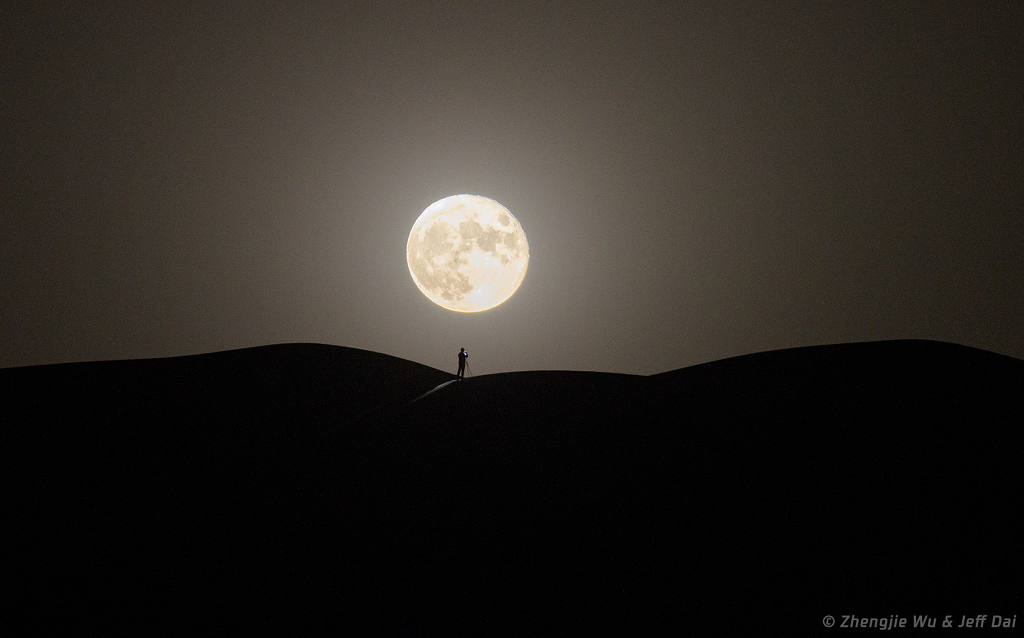完整的月光
(原标题: Full Moonlight)
2021-11-18
浏览次数: 149
在这张精心策划的长焦照片中,当满月升起时,一位摄影师站在明亮的月光下。当然,满月通常是最亮的月相。但在11月18日至19日,在地球大部分地区都能看到的月偏食期间,满月的光线将会变暗。在月食最严重的时候,当月球滑向地球本影的南部边缘时,只有月球盘直径的百分之几会留在地球的黑暗本影之外。接近远地点,即月球轨道上的最远点,月球的运动将会缓慢。这应该会使2021年的第二次月食成为一次异常漫长的月偏食。在北美的大部分地区,在黎明前的几个小时就可以看到月食的分相。由于日食往往是成对出现的,这次月食将在12月4日的两周后发生日食。
查看原文解释
A photographer in silhouette stands in bright moonlight as the Full Moon rises in this well-planned telephoto image. Of course, the Full Moon is normally the brightest lunar phase. But on November 18/19, the Full Moon's light will be dimmed during a deep partial lunar eclipse seen across much of planet Earth. At maximum eclipse only a few percent of the lunar disk's diameter should remain outside the Earth's dark umbral shadow when the Moon slides close to the shadow's southern edge. Near apogee, the farthest point in its orbit, the Moon's motion will be slow. That should make this second lunar eclipse of 2021 an exceptionally long partial lunar eclipse. For most of North America the eclipse partial phases will be visible in predawn hours. Since eclipses tend to come in pairs, this lunar eclipse will be followed by a solar eclipse in two weeks on December 4.
© Jeff Dai
